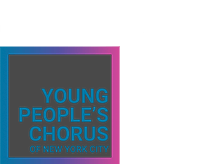The Japanese language is an utter mystery to me. It is difficult enough to be in any country where your native tongue is not used, but Japan is another story—we don’t even share an alphabet! Sure, airports and train stations have English translations, and hotels and tourist traps will usually provide some broken English phrases, but when we are given the opportunity to go out for dinner and truly immerse ourselves in Japanese culture, we more often than not find ourselves pointing madly at pictures and mooing, squawking, or oinking to determine whether the meat in question is beef, chicken, or pork.
Just the other night, a group of us found a tiny, authentic restaurant in Tokyo. We took off our shoes and shut ourselves into a chamber with tatami mats.
We picked up the menu, only to realize that there was not a single familiar word and no pictures to accompany the long lines of characters. We frantically listed dishes to our waiter, who just shook his head. At last, a fellow customer approached, offering his aid. He ordered us a feast of foods that we did not recognize. We were adventurous and tried everything—it ended up being one of the greatest meals I’ve had on the trip. However, it just goes to show that, without someone to help you along, language barriers can impede on the best and most fulfilling experiences.
In the past week or so, we have met many Japanese people: we have done two exchanges with Japanese schoolchildren and have presented a workshop at the Min-On Culture Center. At each of these occasions, we have attempted to communicate with the people on our own but relied heavily on expert translators to render speeches from Japanese to English, and vice versa.
Proper communication here can be strenuous, to say the least. But once the formalities are over and the music begins, we are finally able to begin a conversation that comes directly from our hearts. At our two exchanges thus far, we sang for each other and then sang the piece “Tegami” together. There we were, groups of children from completely different parts of the world, able to make music together. Some of us found tears rolling down our cheeks—all cultural and language barriers had been thrown aside, forgotten, and we were simply singing.
In our concerts, we walk into the aisles during “Bridge Over Troubled Water” and our encore, “Oye.” The majority of the people cannot express in words that we understand what the concert has meant to them. They shake our hands profusely, but the most meaningful moment comes when they join in the music, clapping and dancing along, and even lifting their own voices. It is through the music that we make our greatest connections.
At our workshop, someone asked how we YPC choristers are tolerant towards each other in a group of such diversity. To me, the answer is simple: music cuts across the divides of race and tongue. YPC choristers have a passion that allows us to come together with one another and with the world at large. Music is the greatest ambassador and the best translator. At the end of our concerts, we sing “Imagine,” imagining that one day, “the world will live as one.” In those moments when we are all singing together, it seems that the world truly is as one.
– Solveig
